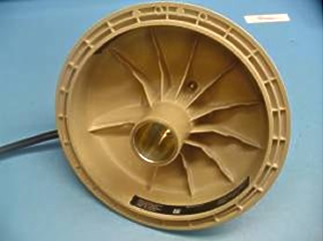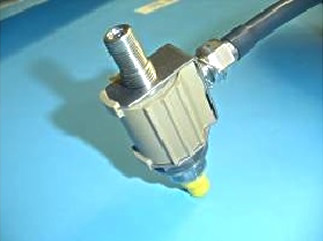Aerospace

Aerospace Industry Molding Applications by Ming-Li Precision
Plastic injection molding is an essential manufacturing process in the aerospace industry due to its ability to produce high-precision, lightweight, and durable components. Here are the key applications and benefits of plastic injection molding for aerospace:
Key Applications
1. Interior Components
- Cabin Interiors: Seats, overhead storage bins, and interior panels are often made using plastic injection molding. The process allows for the production of aesthetically pleasing parts that meet strict safety and performance standards.
- Instrument Panels: High-precision plastic parts for cockpit instrument panels, ensuring durability and reliable performance under various conditions.
2. Structural Components
- Brackets and Clips: Lightweight and strong plastic brackets and clips are used throughout the aircraft to secure wiring, tubing, and other components.
- Fairings and Covers: These components streamline airflow over the aircraft's structure and protect sensitive areas from environmental exposure.
3. Functional Components
- Connectors and Fasteners: High-performance plastic connectors and fasteners are essential for electrical and mechanical systems in the aircraft.
- Ducting: Air distribution systems often use injection-molded plastic ducting to reduce weight and improve efficiency.
4. Safety and Emergency Equipment
- Oxygen Masks and Housings: Plastic injection molding is used to create components for emergency oxygen systems, ensuring reliability and compliance with safety standards.
- Fire Detection Systems: Enclosures and housings for fire detection and suppression systems are often made from high-performance plastics.
Benefits of Plastic Injection Molding for Aerospace
1. Weight Reduction
- Lightweight Materials: Plastics are significantly lighter than metals, contributing to overall weight reduction, which improves fuel efficiency and performance.
- Composite Materials: Advanced composites can be molded to provide even greater strength-to-weight ratios.
2. Design Flexibility
- Complex Geometries: Injection molding allows for the creation of complex shapes and intricate designs that would be difficult or impossible to achieve with traditional manufacturing methods.
- Customization: The process supports a high degree of customization, enabling manufacturers to tailor parts to specific design requirements and functional needs.
3. Cost Efficiency
- High Volume Production: Injection molding is ideal for producing large volumes of identical parts, reducing per-unit costs.
- Minimal Waste: The process is efficient, with minimal material waste compared to subtractive manufacturing methods.
4. Durability and Performance
- High-Performance Plastics: Materials such as PEEK, polyimides, and polyphenylene sulfide (PPS) offer excellent thermal stability, chemical resistance, and mechanical strength.
- Consistency and Precision: Injection molding provides consistent quality and precise tolerances, which are critical in the aerospace industry.
Materials Commonly Used
- PEEK (Polyetheretherketone): Known for its high thermal stability, chemical resistance, and mechanical properties.
- Polyimides: Offer excellent thermal resistance and mechanical strength, suitable for high-temperature applications.
- PPS (Polyphenylene Sulfide): Provides high mechanical strength and chemical resistance, often used in structural components.
Plastic injection molding plays a crucial role in the aerospace industry, offering significant advantages in terms of weight reduction, design flexibility, cost efficiency, and durability. By leveraging advanced materials and precise manufacturing processes, the aerospace industry can produce high-quality components that meet stringent performance and safety standards.

PEEK (Polyetheretherketone) is a high-performance thermoplastic polymer that finds numerous applications in the aerospace industry due to its exceptional combination of properties, including high strength, lightweight, chemical resistance, and temperature stability. Here are some common applications of PEEK material in the aerospace sector:
- Structural Components: PEEK is used in the fabrication of structural components such as brackets, clips, panels, and housings in aircraft interiors and exteriors. Its high strength-to-weight ratio, stiffness, and fatigue resistance make it suitable for replacing metal components, reducing weight, and improving fuel efficiency without compromising performance or safety.
-
Engine Components: PEEK is employed in various engine components and systems in aircraft propulsion systems, including:
-
Bearings, bushings, and thrust washers: PEEK's low friction, wear resistance, and self-lubricating properties make it suitable for bearing and bushing applications in engine systems, reducing friction, improving efficiency, and extending component life.
-
Seals and gaskets: PEEK's chemical resistance, high temperature stability, and resilience make it ideal for sealing applications in engine systems, including seals for combustion chambers, oil seals, and gaskets for fuel systems.
-
Thermal insulators: PEEK's thermal stability and insulating properties make it suitable for thermal management applications in engine components, including insulators for turbine blades, exhaust components, and heat shields.
-
-
Interior Components: PEEK is used in the manufacturing of various interior components and systems in aircraft cabins, including:
-
Interior panels, trays, and fixtures:PEEK's lightweight, flame retardant, and aesthetic properties make it suitable for interior panels, trays, and fixtures, including overhead bins, sidewalls, and galley components.
-
Seat components:PEEK is utilized in seat components such as seat frames, armrests, and tray tables due to its high strength, stiffness, and flame retardancy, ensuring passenger safety and comfort.
-
-
Electrical and Electronic Components: PEEK is employed in electrical and electronic components and systems in aircraft avionics and systems, including:
-
Connectors and housings: PEEK's electrical insulation, thermal stability, and chemical resistance make it suitable for connectors, housings, and enclosures for electrical and electronic components, ensuring reliability and performance in demanding aerospace environments.
-
Cable insulation and sheathing: PEEK is used as insulation and sheathing material for wires and cables in aircraft wiring systems, providing protection against electrical and thermal hazards, abrasion, and chemical exposure.
-
-
Fluid Handling Components: PEEK is utilized in fluid handling components and systems in aircraft hydraulic, fuel, and pneumatic systems, including:
-
Pump components: PEEK's chemical resistance, low friction, and wear resistance make it suitable for pump components such as impellers, seals, and bearings, ensuring reliable performance and longevity in fluid handling systems.
-
Fuel system components: PEEK is used in fuel system components such as fuel lines, fittings, and connectors due to its chemical resistance, thermal stability, and compliance with industry regulations for fuel contact materials.
-
Overall, PEEK material offers significant advantages in terms of performance, reliability, and weight savings in critical applications within the aerospace industry, contributing to enhanced safety, efficiency, and sustainability in aircraft design, manufacturing, and operation.

Case Study - Plastic molding applicaiton for aerospace landing gear hubcaps
VICTREX PEEK 450GL30 (courtesy of Crane Aerospace & Electronics)

- Weight reduction
- Wide temperature range of operation ( -54°C at altitude, > 200°C on braking)
- Mechanical properties to resist repeated hard landings
- Resistance to impacts from flying debris
- Chemical resistance to jet fuel, hydraulic fluid, and de-icing solution
- Resistance to ozone
- Paintable for appearance and enhanced UV resistance
Case Study - Plastic molding applicaiton for aerospace electric wire bundle and tubing Clamps
VICTREX PEEK 150GL30(courtesy of Amphenol PCD)
- Weight reduction by a minimum of 20%

- Part count is reduced by consolidating parts
- Standardising on a consistent design throughout
- VICTREX PEEK is completely non-corrosive and non-conductive
- Scalable design available in a range of sizes: 15 P-clamps, 12 Omega clamps
- Compatible with wire bundles or tubes from 6 mm to 50 mm diameter



